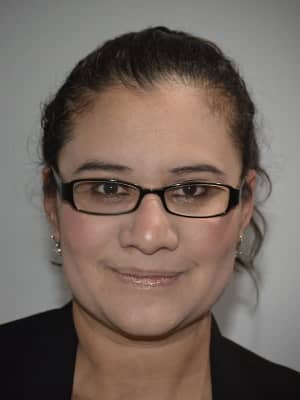How 6 Experts Would Craft an Ideal Income-Driven Repayment Plan
 Credit: showqdf
Credit: showqdf- Low-income borrowers benefit the most from income-driven repayment (IDR) plans.
- Advocates hope any new plan would properly support these low-income borrowers.
- One issue experts are looking at: The timeline to debt forgiveness for borrowers in good standing.
Income-driven repayment (IDR) plans were supposed to offer a pathway to lower monthly payments for borrowers paying off student loans, but experts say the system is confusing and not achieving that goal.
Now, President Joe Biden’s Department of Education (ED) is attempting to simplify and expand these programs, with a new IDR proposal expected later this month. Like previous IDR plans, the new one would have borrowers pay only a portion of their discretionary income each month to pay off their student loans, rather than a flat rate based on how much they owe. Then, after 20 to 25 years, borrowers will be eligible for forgiveness.
That’s how existing plans work, and experts expect something similar based on what the department offered during negotiated rulemaking in December.
But to many advocates and student loan experts, that proposal doesn’t go far enough.
BestColleges spoke with six experts following the IDR plan progress to gain insight into what they would like to see in an ideal IDR plan. Many touched on the same topic areas, including time to forgiveness, the percentage of protected income, and prorated discharge.
Include Graduate Degree Debt
Jeri O’Bryan-Losee
Statewide Secretary-Treasurer, United University Professions

One lightning-rod issue during last December’s negotiated rulemaking for the new IDR plan was ED’s proposal that a new plan excludes graduate debt. O’Bryan-Losee called that exclusion unacceptable. Students with any type of debt should have access to the best IDR plans, she said.
“I don’t see the logic in why you wouldn’t do that, especially since we have pushed education to where you have to have a certain degree for certain fields,” she said.
The logic is that those with graduate degrees will have access to higher-paying jobs. However, that’s not always the case. Some students attend graduate school but don’t finish with a degree. Jobs in some fields, such as social work, require graduate degrees but still don’t offer high salaries. Other students may enter careers with high earning potential, but even doctors could take years before their salary is high enough to cover their large debt burden.
“It should encompass everybody,” she said. “We have to be careful about nickel and diming.”
Repayment Shouldn’t Weigh Borrowers Down
Persis Yu
Policy Director, Student Borrower Protection Center

A core tenant of all IDR plans is that some of the borrower’s income remains “protected.” The percentage of a borrower’s income that is protected from repayment is calculated through a formula that considers an individual’s annual salary and the federal poverty line.
Most IDR plans only calculate discretionary income as all income above 150% of the federal poverty line. For example, the poverty line for a family of four is $27,750 per year in income. So, if a borrower’s family brings in less than $41,625, they will have $0 monthly payments. Under most plans, the monthly payment will be 10% of all income above that.
Yu and other borrower advocates take issue with that 150% figure.
Consider the above example: A family of four making $41,625 may still not have enough money to live in some parts of the country, as housing costs alone will eat into much of that income.
“Look at the cost of living in just about any part of the country; it just doesn’t leave you with enough money to meaningfully get by,” she said.
Yu pointed out that the Massachusetts Institute of Technology’s (MIT) living wage calculator shows that most need at least 250-300% of the federal poverty level to get by. Ideally, the amount of protected income under IDR would be about 400% so that low-income borrowers can live without the weight of student loan debt holding them back, Yu said.
No matter the final number, she is adamant that protected income has to be lifted above 150% to account for a higher cost of living.
Let Borrowers Keep More Discretionary Income
Tiara Moultrie
Fellow, The Century Foundation
The other part of the IDR puzzle is the percentage of discretionary income charged monthly.
Depending on the plan, borrowers spend 10-20% of their discretionary income each month on these plans. In some cases, the year a student borrowed changes this rate.
Moultrie feels that to protect the lowest-income borrowers, 10% is too high. She would rather see that number lowered to 8%.
But 20% is far too high, she said. In fact, it’s so high that for some borrowers, it wouldn’t be worth it to be on an IDR since so much of their income would go toward repayment.
Lowering the percentage would also help account for the fact that the federal poverty rate doesn’t consider regional cost of living differences.
“Discretionary income looks very different in Albany than it does in New York City,” Moultrie said.
By capping monthly payments at a low percentage, payments would be more manageable in expensive regions even if protected income doesn’t increase.
Fix Forgiveness Timeline
Bethany Lilly
Director of Income Policy, The Arc of the United States

IDR plans forgive outstanding debt after a borrower has made a certain number of on-time payments.
The earliest borrowers can get forgiveness under the current IDR plans is 20 years. However, the Public Service Loan Forgiveness (PSLF) program, which applies to people who work in nonprofits and government agencies, forgives debt after just 10 years.
The IDR and PSLF timelines should be more closely mirrored, Lilly said. Doing so would help borrowers get out from under debt sooner and would reward many low-income borrowers who still work in essential industries. For example, many of the people who work in healthcare or senior care do so on contracts, which makes them ineligible for PSLF.
Moreover, Lilly said, two decades is too long to let debt hang over a borrower.
“People feel trapped,” she said. “When you tell your people you’re going to be spending a fifth of your life paying student loans, that’s terrifying.”
If the issue is how the federal government incentivizes grads to pursue public service careers, then allow IDR forgiveness after 12 years, she said. That would be significantly shorter than the current timeline but still longer than that for forgiveness under PSLF.
Make IDR More Transparent
Michele Streeter
Associate Director of Policy and Advocacy, The Institute for College Access and Success

Experts who deal directly with borrowers shared a similar observation: Many borrowers don’t trust that their debt will ever be forgiven.
A recent report from the Government Accountability Office (GAO) found that mistrust may be warranted. Of 7,700 loans from IDR that could potentially be eligible for forgiveness, only 157 had been forgiven.
ED has work to do to make the system more transparent. Step one is to implement an easy way for borrowers to track their payments and see how close to relief they are on the Student Aid website, Streeter said.
“As it is now,” Streeter said, “they feel like they’re gambling.”
The department also needs to address problems with inaccurate tracking. The GAO report found that transferring loans between servicers led to undercounted payments, potentially adding months or years to a borrower’s time to forgiveness.
This mistrust impacts people’s willingness to borrow money for other necessities, even with the promise of forgiveness far down the road.
“You can know intellectually that it will be forgiven,” Streeter said, “but there is research that says this is a weight people carry with them that impacts financial and personal decisions.”
Forgive Debt While Borrowers Pay It Off
Carolina Rodriguez
Director, Education Debt Consumer Assistance Program

One way to circumvent some of these trust issues? Forgive the gross debt little by little, rather than all at once after 20-25 years.
Rodriguez proposes a prorated forgiveness method where people can begin to see relief as soon as five years into repayment. Under her process, people would see 25% of their loan balance eliminated every five years.
“If you prorate it, I think the government will actually get even more money,” she said. “You could have people who say they’ll pay off the remaining debt and get it over with.”
By saving forgiveness until the end, few borrowers have any incentive to pay more than their IDR says because they aren’t likely to make enough of a dent to pay their loans off in full.